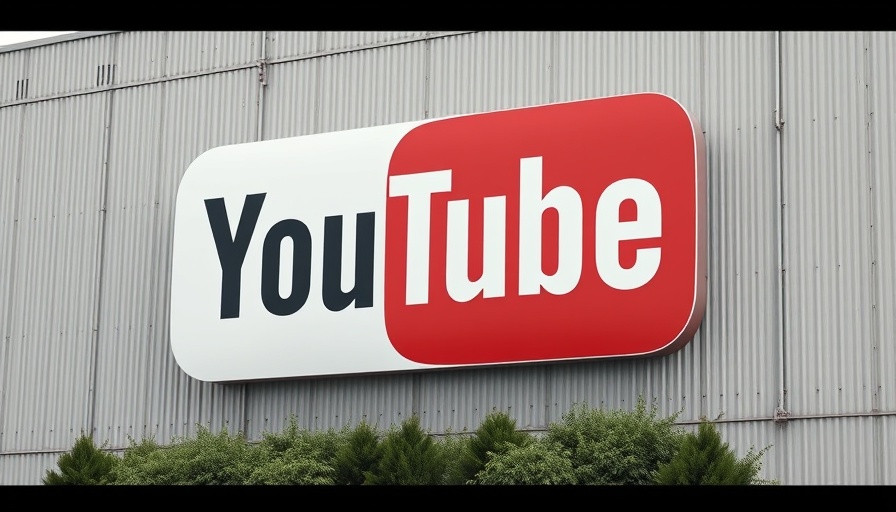
YouTube Takes the Lead in Television Viewing
In a surprising shift within the media landscape, YouTube has taken the lead over Disney and Netflix in television viewership, a trend confirmed by the latest Nielsen report. This March 2025 report indicated that YouTube commanded 12.4% of total television viewing, marking a steady rise from previous months and a significant leap from 9.6% one year ago. This growing dominance is reflective of changing viewing habits, where audiences increasingly favor on-demand content delivered via streaming platforms.
The Battle for Viewership: YouTube vs. Traditional Media
Traditionally, major streaming and media companies like Disney and Netflix have held strong positions in TV viewing. However, as YouTube integrates more live content and premium offerings into its platform, it appears to resonate more with viewers. Disney still holds a notable 10.7% of the viewing audience, maintaining its position in the competitive landscape, but it is clear that YouTube’s explosive growth is shifting market dynamics. This challenge to legacy companies poses questions about their future strategies and how they will adapt to retain viewership.
Why YouTube’s Growth Matters
YouTube's ascent in the television sector underscores a broader trend of changing consumer behavior. Platforms that prioritize user-generated content and accessibility are becoming more appealing to viewers, especially younger generations who value flexibility in how they consume media. With a substantial deal with the NFL to stream live games, YouTube is not just a platform for video content but is positioning itself as a serious player in live sports broadcasting. This move could attract even more viewers to its platform, further challenging traditional media standards.
Could YouTube Become the Standard?
As YouTube continues to innovate with exclusive content and evolving its programming, there are potential implications for traditional cable subscriptions and streaming services. Many consumers are questioning the value of conventional television in light of shifting trends towards streaming platforms. With the integration of diverse content—from music to original series—YouTube may set a precedent for how future viewing evolves.
What Does This Mean for Advertising?
With increasing viewership, YouTube's platform becomes a lucrative space for advertisers seeking to engage with a broad audience. Companies looking to capitalize on advertising spend will need to re-evaluate their strategies to tap into this trend. The platform's ability to provide targeted advertising based on user preferences is likely to draw in more advertisers, shifting the advertising landscape as a result. Additionally, YouTube’s emphasis on connecting viewers with brands in an organic manner could redefine advertising norms within the digital space.
Future Predictions: Where Will YouTube Go From Here?
Looking ahead, it's anticipated that the gap between YouTube and traditional media will continue to close as audience preferences evolve. Content that appeals to niche interests will likely proliferate, further diversifying the viewing experience. As YouTube embraces live events and exclusive partnerships, it is poised for continued growth; the challenge now lies in how legacy players like Disney and Netflix respond. These insights showcase a pivotal change in television—viewers now gravitate towards platforms offering flexibility, diverse content, and interactive opportunities.
In conclusion, YouTube’s rise over established giants not only highlights a significant shift in viewing habits but also sparks essential conversations about the future of media consumption. For businesses and consumers alike, adapting to these changes will be critical in navigating an increasingly digital world.
 Add Row
Add Row  Add
Add 



Write A Comment